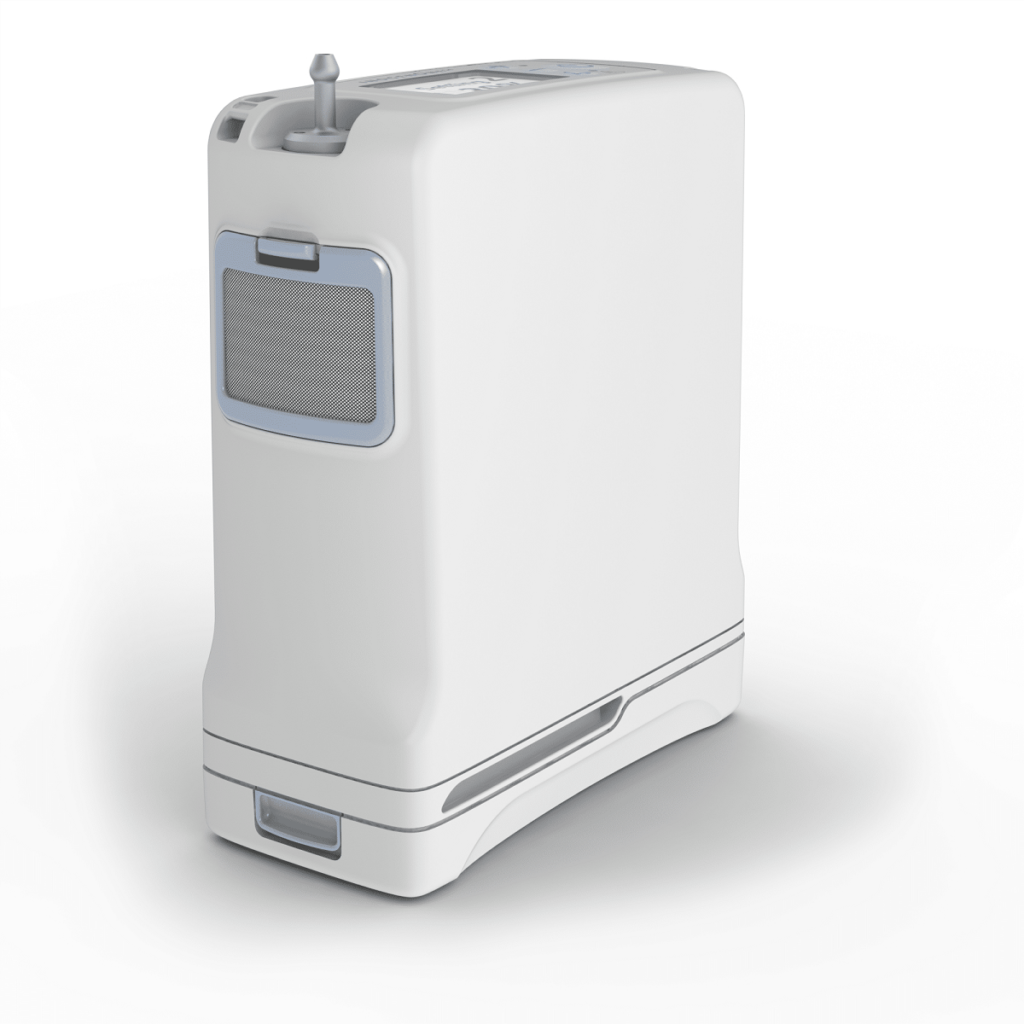Difference Between Pulse Flow and Continuous Oxygen
What is the Difference Between Pulse Dose & Continuous Flow Oxygen Concentrators?
Patients with respiratory illness may require supplemental medical oxygen. When your physician writes a prescription, they will indicate the number of liters of oxygen delivered per minute (LPM) that you require. The LPM required will help determine whether a pulse dose or continuous flow oxygen concentrator best suits your needs. Here's how the two types of devices work.
What is Pulse Dose?
Pulse dose oxygen concentrators deliver oxygen on inhalation. This type of oxygen flow is ideal for treating respiratory conditions that do not require a high LPM (liters of oxygen delivered per minute). The benefit of a pulse dose oxygen concentrator is that it works with your breathing needs as they change. You get oxygen at your own pace. Plus, pulse dose oxygen concentrators are usually small, compact and lightweight so they are also easy to take along for daily activities.
What is Continuous Flow?
Continuous flow oxygen concentrators deliver a steady flow of oxygen all the time. If your prescription calls for a high LPM, you will probably need a continuous flow concentrator. These machines work harder than pulse concentrators, delivering oxygen all day and night, even as you sleep.
Best Pulse Dose Oxygen Concentrators
If you have a prescription for a low LPM, you can choose from a variety of pulse dose oxygen concentrators. Portable concentrators are currently the only machines that offer a pulse dose setting.

As a portable oxygen concentrator, the Inogen One G4 Portable Concentrator is versatile. It detects your breath and delivers essential oxygen needs with precision. This unit is both lightweight and compact, weighing only 3.3lbs with a double battery and sized to 6"x3"x7". Its design allows oxygen delivery on-the-go, so users can stay active.
The DeVilbiss iGo Portable Oxygen Concentrator is another popular pulse dose unit thanks to a number of features. It includes a built-in Oxygen Sensing Device (OSD) to ensure accurate delivery of therapy. With a battery that lasts up to 5.4 hours, patients don't have to worry about rushing to the nearest outlet. The iGo even allows for tubing up to 35 feet long in pulse flow mode, allowing users more freedom to move around.
Best Continuous Flow Oxygen Concentrators
Home concentrators like the Philips Respironics EverFlo Q Oxygen Concentrator with OPI deliver continuous oxygen between 1 to 5 LPM. The OPI, or Oxygen Purity Indicator, measures oxygen output to ensure accurate purity. Because continuous flow concentrators run constantly, patients usually choose a machine like the EverFlo Q because it is quiet at 40 dBa.

When your oxygen flow settings need to change regularly, you may want to consider the DeVilbiss 10 Liter Home Oxygen Concentrator. This nimble machine delivers 87% to 96% oxygen purity from 2 LPM to 10 LPM. The unit only weighs 42 pounds and comes with wheels, which makes it easy to move from room to room.
For a portable option, consider the Philips Respironics SimplyGo Portable Oxygen Concentrator. This compact unit offers both delivery options: up to 2 LPM in continuous or 6 in pulse dose mode. The unit weighs 10lbs with a battery and is sized at 11.5"x10"x6", making it convenient to run errands or spend time out of the house.
Pulse Dose vs. Continuous Flow Oxygen Concentrators - Which to Buy?
Oxygen concentrators require a valid prescription from a doctor in order to purchase. Before selecting a device, be sure to discuss your oxygen needs with a physician.
Continuous flow oxygen is generally used for patients with a more severe chronic respiratory condition. For some users, continuous flow oxygen may also need to be combined with CPAP therapy. Pulse dose oxygen, on the other hand, is a great tool for users with less severe conditions. Pulse dose oxygen delivery cannot be used with CPAP therapy.
Some oxygen units are able to provide both continuous flow and pulse dose delivery. For those units, it is important to note that 2.0 LPM of continuous flow oxygen does not equal a pulse dose setting of 2. Talk to your doctor to determine the appropriate number for each setting.
If you need help selecting an oxygen concentrator, our knowledgeable customer care team is here to answer any questions. Give us a call at 888-941-1688 or email us at contact@oxygenconcentratorsupplies.com. Let us help you find an oxygen concentrator that best fits your needs.
Source: https://www.oxygenconcentratorsupplies.com/articles/difference-between-pulse-dose-continuous-flow-concentrators/
0 Response to "Difference Between Pulse Flow and Continuous Oxygen"
Postar um comentário